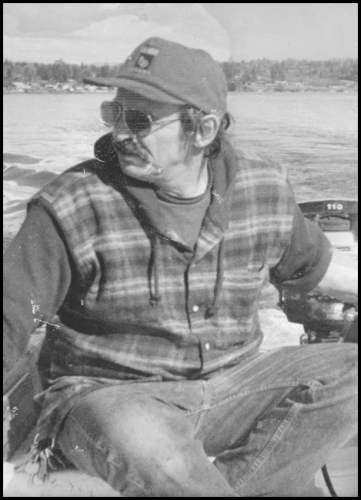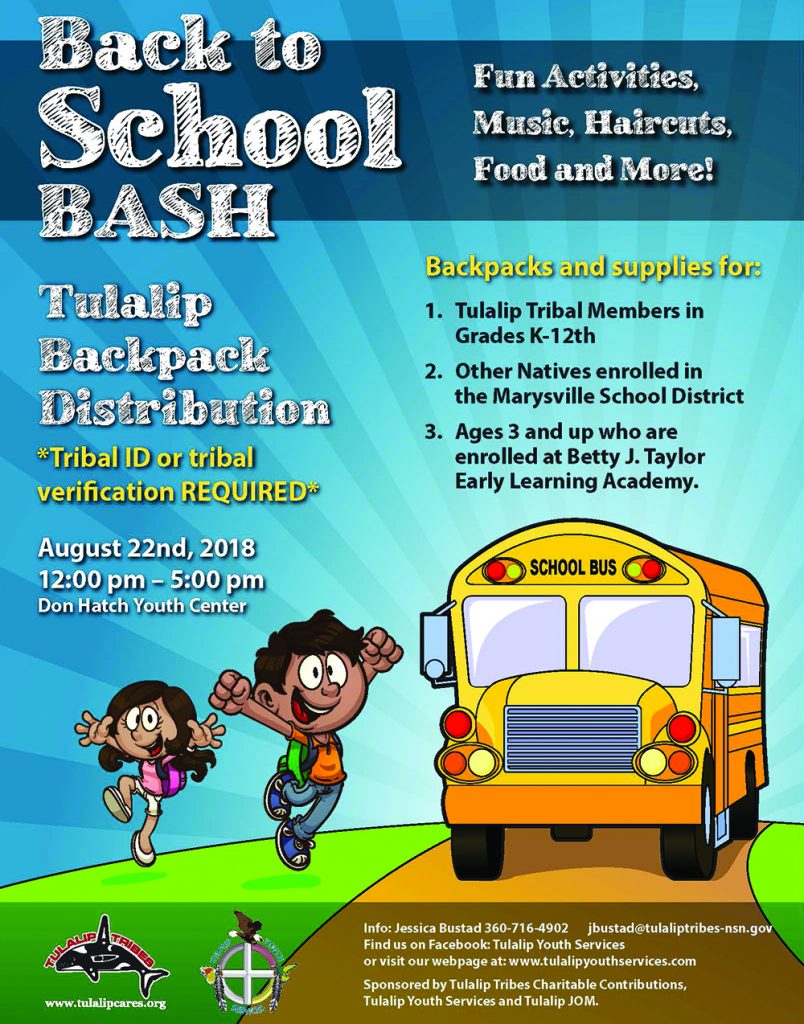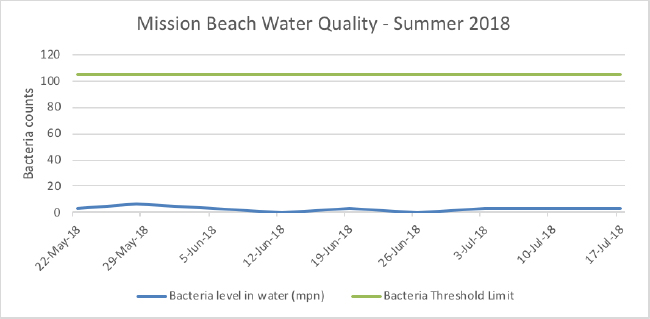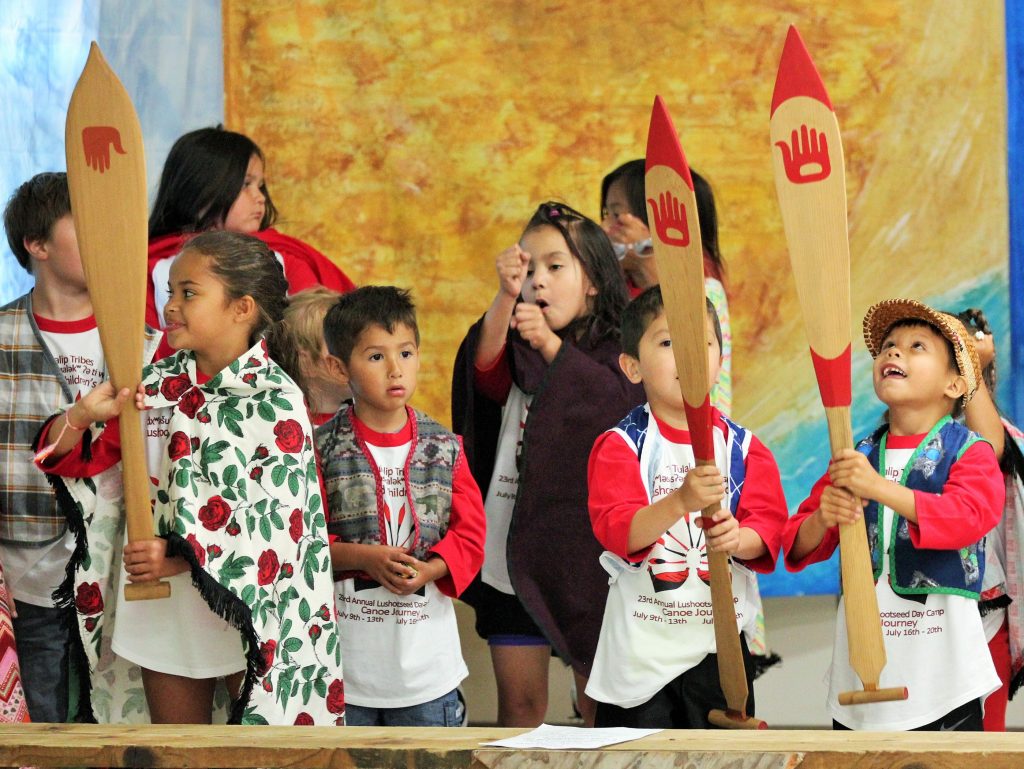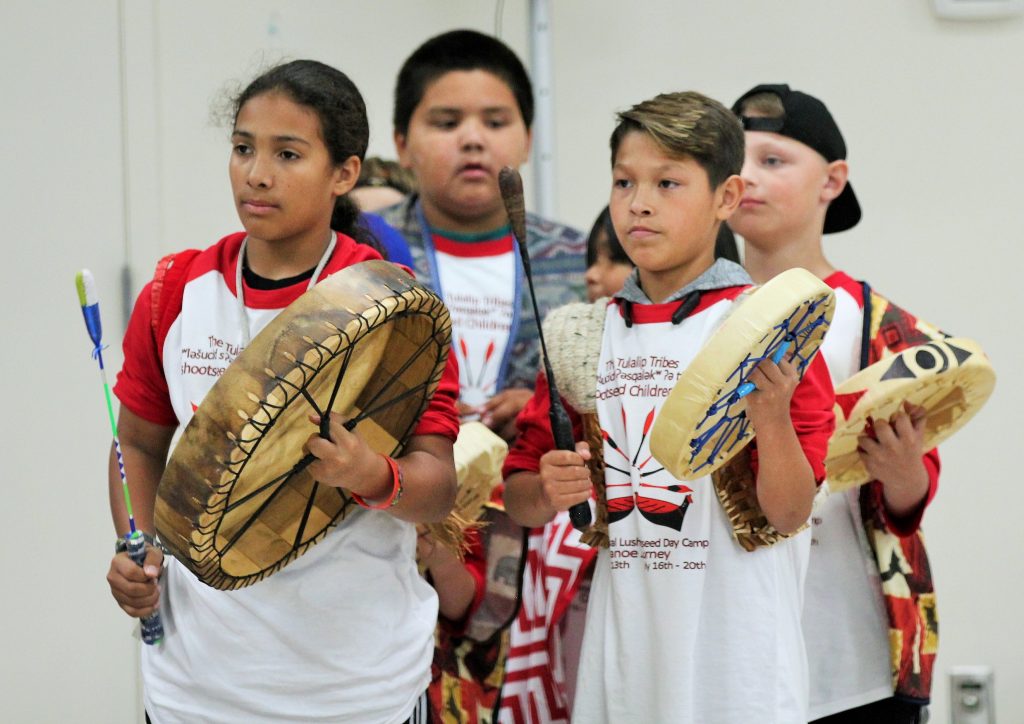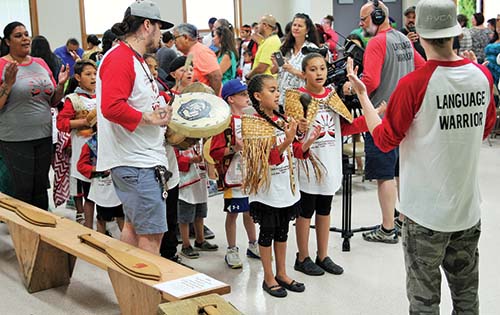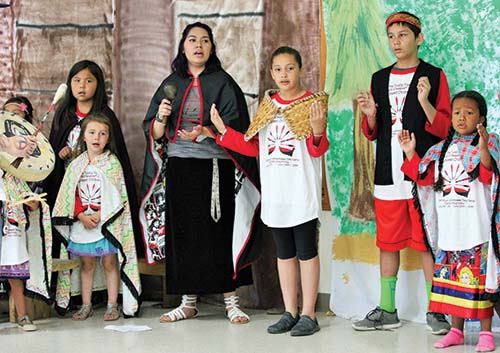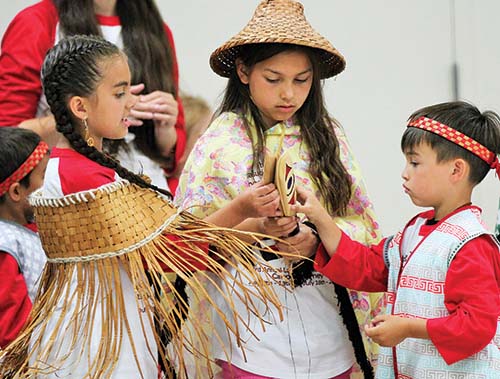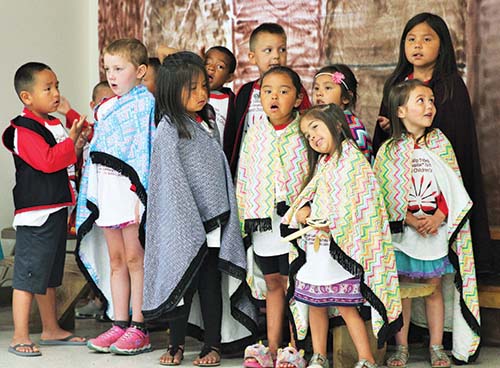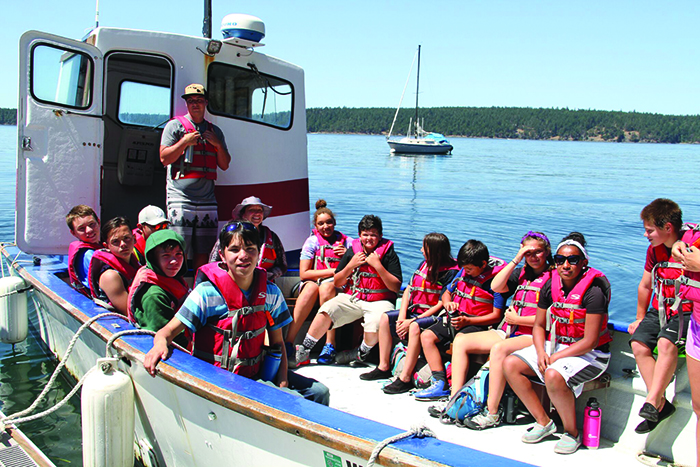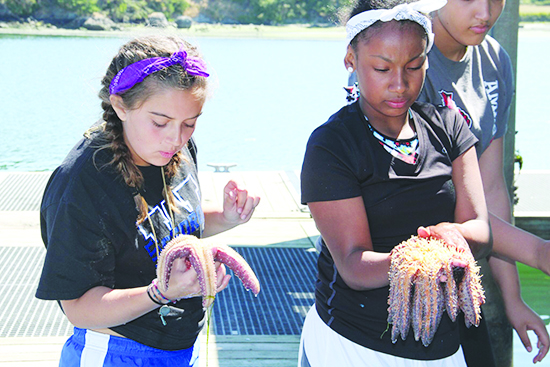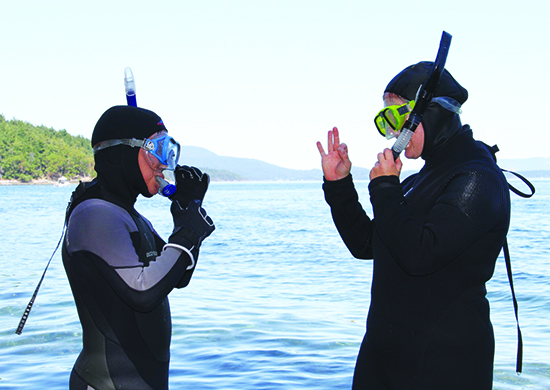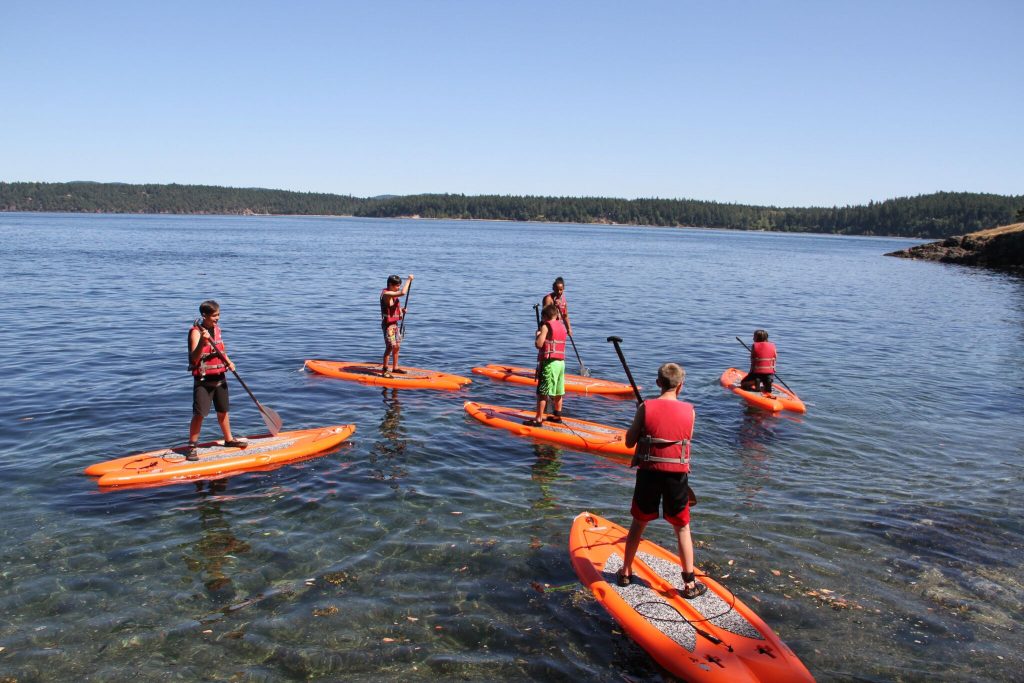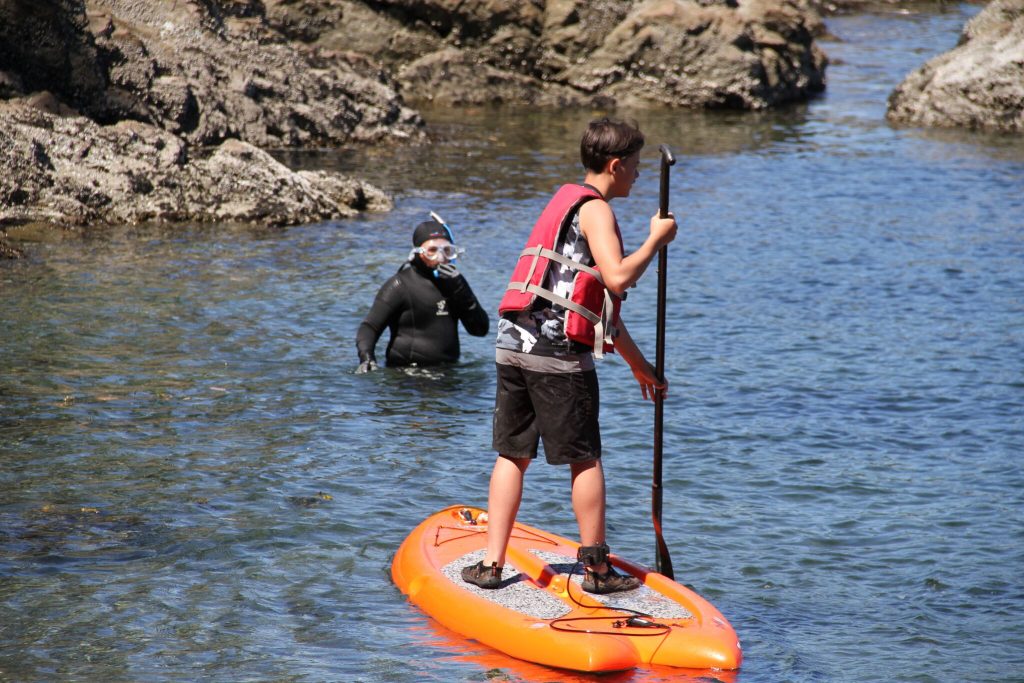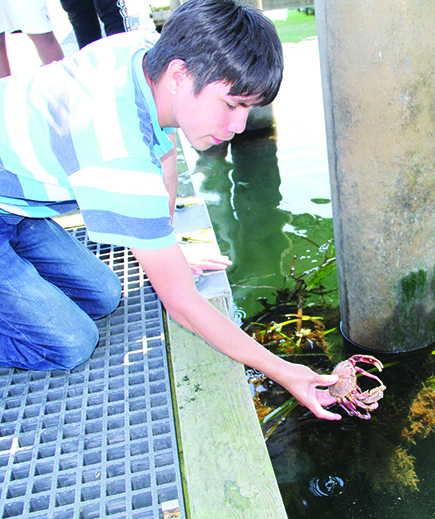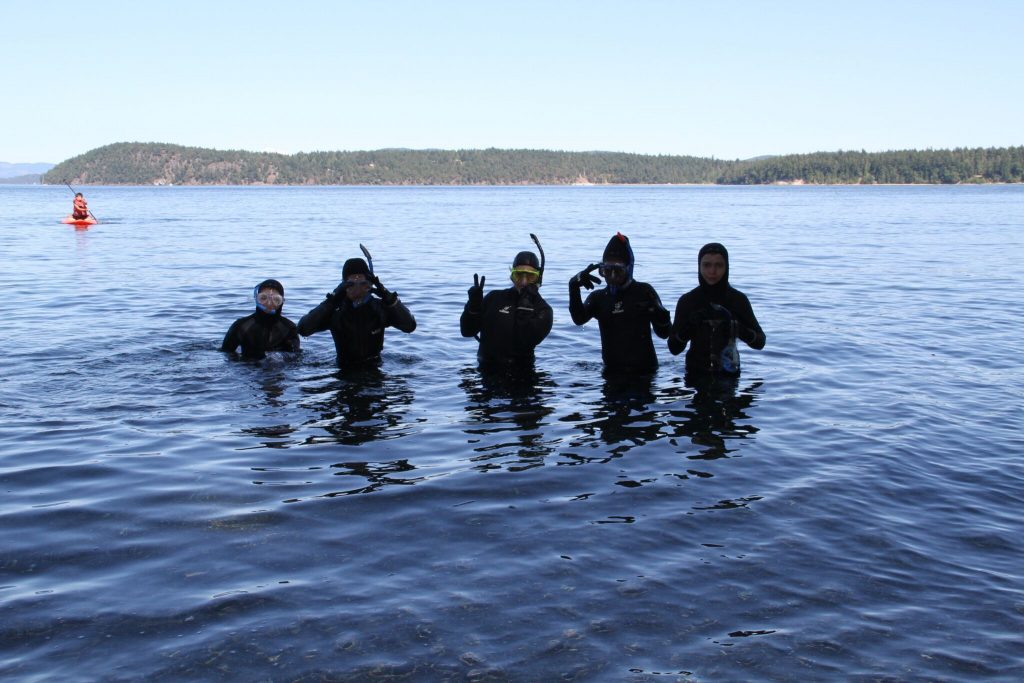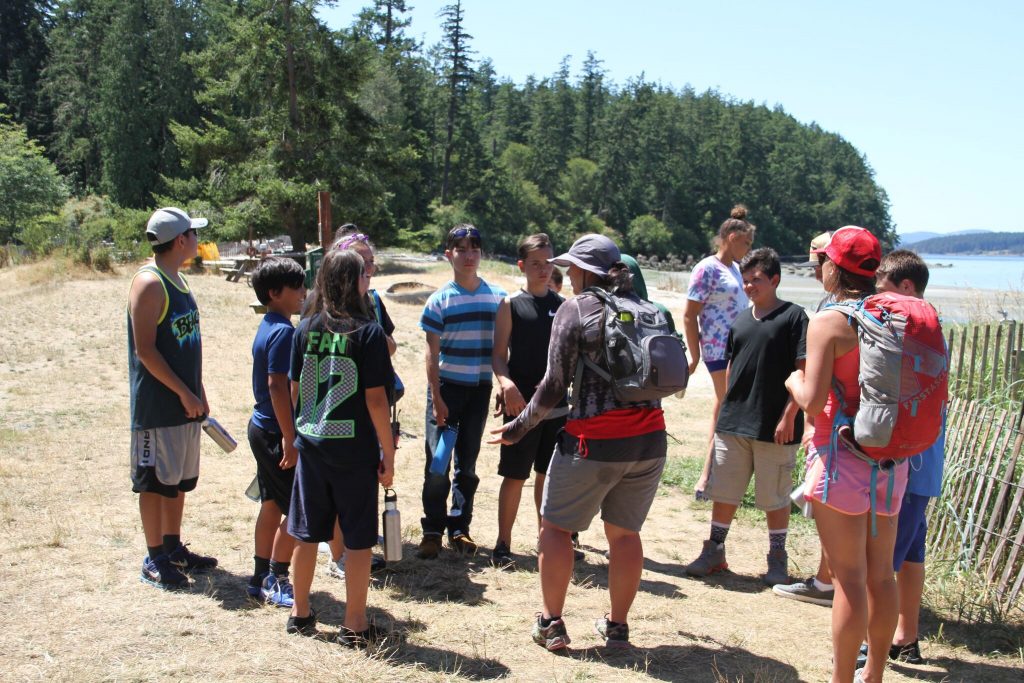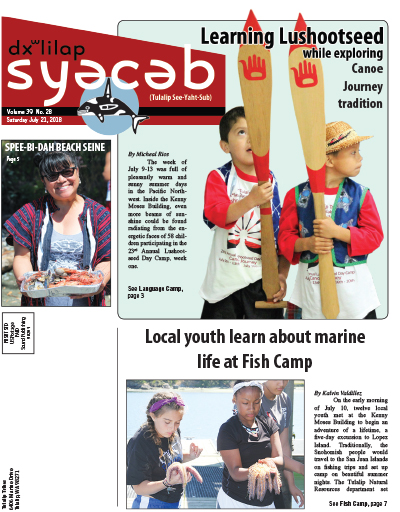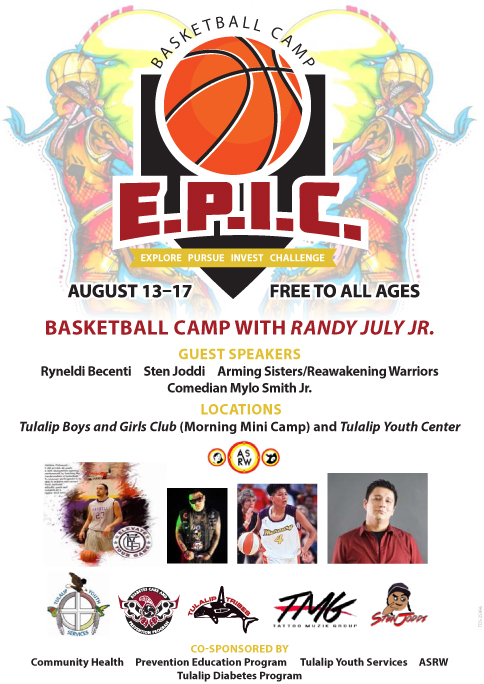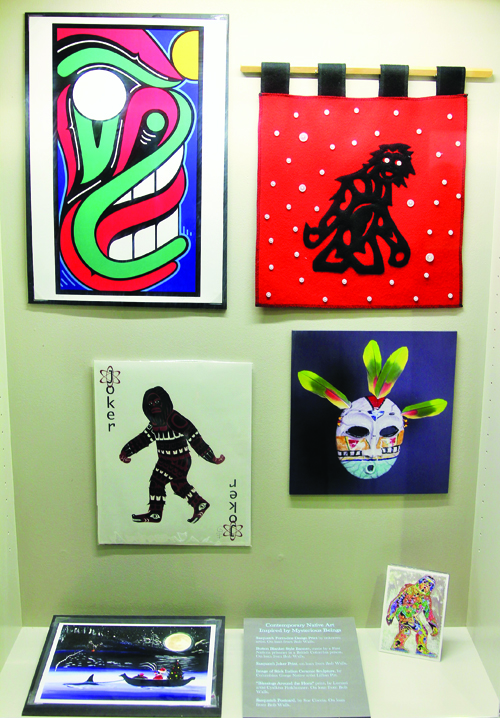February 10, 1948 – July 19, 2018 Danny Lee Hunter, 70, went with the Lord peacefully at the Hospice Care Center in Everett, WA on July 19, 2018. He was born on February 10, 1948 to George Lee Hunter and Bessie Marie Hunter in Bremerton, WA. He lived with his wife, Carol Hunter, of 36 years; and their dogs, Dottie and Chico. He was instrumental in developing their property and building their home. He worked several years at the Maltby mill as a laborer, a mechanic, carpenter and landscaper. He was a creative artist who loved painting and also enjoyed rock and roll music. He also would spend many hours on the water fishing for bass and crappie. He was survived by his wife, Carol; brother, Randy Hunter; stepson, Bob Jackson; and grandson, Jacob Jackson. Dan was preceded in death by both parents; seven siblings; stepson, Tony Jackson; stepdaughter, Nadine Jones Robinson (Kenneth Robinson); and stepgranddaughter, Katia Jones. An Interfaith Service will held Wednesday, July 25, 2018 at 6:00 p.m. at Schaefer-Shipman. Funeral Services will be held Thursday, July 26, 2018 at 11:00 a.m. at the Tulalip Gym with burial to follow at Mission Beach Cemetery.
Back to School Bash, Aug 22
Mission Beach Water Quality Mid-Summer 2018 Report
By Valerie Streeter, Tulalip Tirbes Natural Resources Dept.
For the past three years, WSU Beach Watchers volunteers have monitored the quality of water at Mission Beach each week during the summer months. Every Tuesday, you will see them dipping bottles into the water or monitoring the temperature and salinity. The volunteers drive the water samples up to the Tulalip Water Quality Lab, where Harvey Eastman analyzes the water samples for bacteria levels. The beach has been sampled nine (9) times this summer.
So far, this year has the lowest bacteria levels in the water when compared to 2016 and 2017. These levels are well below the threshold limit for swimming, which means that the water is clean! The graphs below show the average result from the three beach sampling stations for this year as well as the last two years. The green line shows the bacteria threshold limit (103 mpn/100mL) and the other line is the average amount of bacteria in the water at Mission Beach (not above 7 mpn/100mL for 2018). If bacterial levels are above the threshold limit, there are more chances for skin infections or gastrointestinal illness from too much pollution.
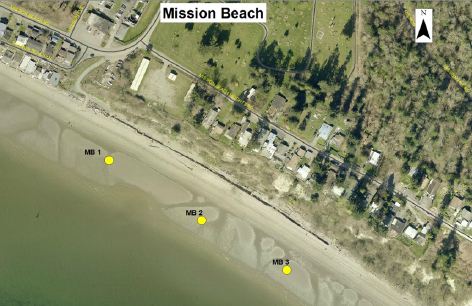
Learning Lushootseed while exploring Canoe Journey tradition
By Micheal Rios, Tulalip News
The week of July 9-13 was full of pleasantly warm and sunny summer days in the Pacific Northwest. Inside the Kenny Moses Building, even more beams of sunshine could be found radiating from the energetic faces of 58 children participating in the 23rd Annual Lushootseed Day Camp, week one.
Open to children age five to twelve who want to learn about their culture and the language of their ancestors, Lushootseed Camp provides invaluable traditional teachings through art, songs, technology, weaving and storytelling. Each year the Lushootseed Department teams up with Cultural Resources, along with a select number of vital community volunteers, to hold two one-week day camps in the summer.
“It makes my heart happy seeing so many of our young ones learning our traditional language,” boasts Michele Balagot, Lushootseed Manager. “It is amazing to witness the amount of participation and community involvement we receive each year.”
With a high turnout in camp participation came an equally impressive turnout in community volunteers who assisted Lushootseed staff to coordinate daily camp activities. There were 15 volunteers readily available on a daily basis to help camp run smoothly.
Throughout the duration of camp, the children participated in seven different daily stations or activities. The following list is what each child accomplished throughout the week:
- Art – Succulents, clam shell rattles, clam shell succulent holders.
- Weaving – God’s Eye, bracelets.
- Songs – Paddle Song, Berry Picking Song, Welcome Song, Kenny Moses’ Arrival Song, Martha Lamont’s huyəxw st’ilib
- Traditional Teachings – Canoes, Canoe Journey protocol
- Language – Lushootseed alphabet, canoe terms.
- Technology – children learned and practiced Lushootseed materials related their final performance using handheld games on Tablets created by Dave Sienko.
Every station and daily lesson incorporated various Canoe Journey teachings and protocol verbiage. With the annual tribal Canoe Journey going on now, it made for an ideal time to teach the youngsters about the tradition.
The closing ceremony for week one’s camp took place on Friday, July 13 at the Kenny Moses Building. The joyous, young play-performers made their theatrical debut to a large community attendance, as family and friends came out in droves to show their support.
“We would like to thank the children for all of their hard work and efforts,” proclaimed Language Warrior Natosha Gobin during the play’s opening. “They attended camp for just one week and learned so much about their culture, traditions, language, and more. They do not hesitate to step up and share their teachings.
“We thank you, the parents, for joining us to celebrate the work the children have accomplished this week,” added Natosha. “Your presence here for the children will encourage their learning of their ancestral language.”
After the youth performed their rendition of “Mini Canoe Journey” and the ceremonial witnesses had shared a few words, there was a giveaway. The camp participants gave handmade crafts to each and every audience member, which preceded a buffet-style lunch featuring salmon.
Local youth learn about marine life at Fish Camp
By Kalvin Valdillez, Tulalip News
On the early morning of July 10, twelve local youth met at the Kenny Moses Building to begin an adventure of a lifetime, a five-day excursion to Lopez Island. Traditionally, the Snohomish people would travel to the San Juan Islands on fishing trips and set up camp on beautiful summer nights. The Tulalip Natural Resources department set out to recreate that experience for the youth by debuting Fish Camp this summer, offered to kids between the ages of eleven and fourteen.
“Fish camp is an addition to our Mountain Camp that we’ve been doing for three years now,” explains Tulalip Natural Resources Outreach & Education Coordinator, Kelly Finley. “During Mountain Camp we take the kids up to the swədaʔx̌ali area, which is a traditional area that they don’t necessarily to get a chance to connect to in modern times. We decided to add on Fish Camp, a place where kids can also reconnect to a traditional area that everyone used to come to and that has a lot of history for Tulalip.”
The first-of-its-kind summer camp takes kids on a journey across the Salish Sea to Lopez Island, one of the many San Juan islands that Tulalip ancestors used to seine-fish. The Point Elliot Treaty of 1855 guaranteed the Tribe’s right to fish in usual and accustomed areas and in 1975, the United States reaffirmed those rights to Northwest tribal members during the historic Boldt Decision. Fish Camp allows the youth to connect to the waters that provided plentiful resources for the Tribe and to learn about the history of their people, all while taking in the many breathtaking views that Lopez has to offer.
After arriving on the island, by way of a Washington State ferry, the kids set up camp at the opposite end of the island on a private beach overlooking Watmough Bay. Once settled in, the campers participated in the first evening circle of the week, getting to know each other a little better before calling it a night.
The second day began bright and early with a two-hour clam dig followed by cedar-basket weaving in the afternoon, led by the Rediscovery Program’s Virginia Jones. Once the campers completed their baskets, they were joined by a number of guests including tribal member, Tony Hatch. He helped the kid’s setup their very own clambake, using the clams the campers dug in the morning as well as fresh shellfish caught traditionally with seine nets.
“I got to eat some delicious clams and shrimp made on rocks,” exclaims young camper, Seth Montero. “What we did is stuck wood on the rocks and set a fire, got rid of the wood and used the rocks to steam the clams and shrimp. They were delicious, the clams opened up when they were ready to eat. I was just scooping away until I got full. We also got to weave baskets earlier, like about cup holder size. [Virginia] gave us a health kit with all of these cool herbal medicines and it was nice because some of them are going to be very useful.”
Before wrapping up an exciting day full of cultural events, the campers were treated to traditional Tulalip stories by Lushootseed Language Teacher, Michelle Myles, who is also a parent of camper, Jacynta Myles-Gilford.
“Every year for the last three years, I come out and stay a night with the kids and tell traditional stories at Mountain Camp,” says Michelle. “The stories that were told at this camp were about sea life, since this is the first year for Fish Camp. I think it’s a wonderful thing because it gets them away from the technology. The majority of the time the kids are on their phones so this allows them to enjoy nature as we did when we were children. It’s also important because this is tribal land. Both camps are on tribal land, so if they know about these places now, maybe when they get older they’ll be able to come out here and hang out with their families and share their experience from camp.”
On their third day at Lopez, the campers joined Natural Resources for a hike and a history lesson at Iceberg Point to kick their day off. The crew then journeyed to Mackaye Harbor where they learned about different aquatic animals by Tulalip Shellfish Biologist Max Lundquist, who dove into the waters to retrieve a number of crabs and starfish. The kids got an up-close look at the sea creatures before releasing them back into the harbor.
“See that? There’s a sea anemone, just like on Finding Nemo,” pointed out young tribal member and camper, Kane Hots, to his friends while looking at the assortment of critters below the Mackaye Harbor docks. “This is pretty cool, I can’t tell what’s more fun, Fish Camp or Mountain Camp – and I like Mountain Camp a lot.”
A few months ago, the Natural Resources team reached out to Camp Canoe, a French language camp located on a private island off of Lopez, to see if they were willing to host Fish Camp. Due to prior engagements, Camp Canoe was unable to hold Tulalip’s camp on their island as they were hosting their own camp the same week. Camp Canoe, however, graciously offered the fish campers an afternoon of snorkeling and paddle boarding off the coast of their island, where speed boats, sailboats and ferries could be seen passing nearby.
“When I went snorkeling, I got to go see a lot of different animals,” recalls Seth. “I saw a great sculpin; it was pretty cool. And I also got to hold a crab and saw lots of starfish, all different colors mostly purple though. It was kind of cold but a lot of fun.”
The last days of camp included a morning of kayaking and an evening of free time where the campers got to enjoy each other’s company before leaving Lopez Island. Many of the youth expressed that they didn’t know any of their fellow campers before the start of Fish Camp, but were happy to create unforgettable memories together while learning about marine life in local, traditional waters.
“It feels good to meet kids from different schools and make friends with everybody,” Seth says. “Hopefully we’ll see each other a lot more in the future because Fish Camp has been really fun and awesome together.”
Natural Resources will host the annual Tulalip Tribes Youth Mountain Camp on August 6-11, and look forward to hosting many more Fish Camps in years to come. For more information, please contact the Tulalip Tribes Natural Resources Department at (360) 716-4617.
Green Jobs
Submitted by Jeanne Steffener, Tulalip Tribes Higher ED
Globally, countries are very concerned with reducing imported fossil fuel use. They are searching for ways to promote the use of domestic green energy resources because of the increasing danger of climate change. Renewable energies, such as wind, solar, geothermal and bioenergy are mushrooming businesses that will thrust us into the new Green Economy. Renewable energy is extremely important because it provides big benefits for our climate, our health and our economy in these forms: minimal or no global warming emission; improved public health and environmental quality; inexhaustible energy supply; jobs and other economic benefits; stable energy prices and a more reliable energy source.
Businesses sympathetic to environmental concerns are creating a whole range of environmentally friendly jobs. We are seeing this growth evidenced in an increase of solar panel installation for businesses and houses, wind energy harnessed east of the Cascades with the windmills erected along the horizons, grocery stores are offering more organic green options throughout their stores, hybrid and electric cars becoming more mainstream. Automobile manufacturers are discontinuing inefficient gas driven models and moving toward the electric/hybrid models. We are noticing more “electric stations” in town and in our travels. This is the beginning of the green revolution. Job creation in the wind energy industry is employing full-time employees in a variety of occupations including manufacturing, project development, construction, turbine installation, operations, maintenance, transportation, logistics, financial, legal, and consulting services. There are over 500 factories in the United States manufacturing parts for wind turbines. The solar industry employs approximately 374,000 people in either full or part-time jobs, in solar manufacturing, installation, and sales and marketing positions. The renewable energy sector now includes these other forms of green energy: hydro energy, ocean energy, and bio-energy employing even more workers. Clean energy is a huge opportunity to revive manufacturing in this country. According to the U.S. Department of Energy, “3,384,834 Americans are directly employed by the clean energy industry which includes the energy efficiency, smart grid, and energy storage industries; electric power generation from renewables; renewable fuels production; and the electric, hybrid, and hydrogen-based vehicle industries”.
 In addition to creating new jobs, increasing our use of renewable energy offers other important economic development benefits. Local governments are able to collect property and income taxes from renewable energy project owners. This revenue supports public services that are vital to the community. Many of these projects are being located in rural areas where jobs are a huge need.
In addition to creating new jobs, increasing our use of renewable energy offers other important economic development benefits. Local governments are able to collect property and income taxes from renewable energy project owners. This revenue supports public services that are vital to the community. Many of these projects are being located in rural areas where jobs are a huge need.
Owners of the lands where wind projects are located receive lease payments for power line easements or road right-away. Another possibility of payment can be earning royalties based on the project’s annual revenues. Other ways that farmers can generate supplemental income is through renewable energy production by producing feedstock for biomass power facilities.
Clean energy careers involve jobs created by energy conservation, alternative energy development, pollution reduction and recycling. A number of colleges and universities are now offering specializations and degree programs in clean energy resource areas. Community colleges are a good resource for certificates and 2-year degrees offering clean energy qualifications. One of the best resources for information on renewable/clean energy education and careers is located at the U.S. Department of Energy’s website: http://energy.gov/eere/education/colleges-and-universities.
Are you interested in discovering more about the green energy revolution? Just pick up your phone and contact the Higher Education Department for more information. You can either call us at 360-716-4888 or email us at highered@tulaliptribes-nsn.gov.
July 21, 2018 syəcəb
Please use the following link to download the July 21, 2018 syəcəb:
https://www.dropbox.com/s/dydt4b2t4bkzp05/July%2021%202018%20sy%C9%99c%C9%99b.pdf?dl=0
A Celebration of the Canoe Journey
The Puyallup School District & the Karshner Museum and Center for Culture & Arts present: A Celebration of the Canoe Journey (August 2 and 3, 10 am to 4 pm)
PUYALLUP, WA (7/13/18)–The Puyallup School District will help celebrate the Canoe Journey 2018 with special events at the Karshner Museum and Center for Culture & Arts on August 2 and 3 from 10 a.m. to 4 p.m. each day. All are invited to this free family event. With the Puyallup Tribe of Indians hosting the 2018 Canoe Journey “Power Paddle to Puyallup” from July 28 to August 4, over 100 canoes and over 10,000 people representing coastal tribes and friends from all over the Pacific Northwest are expected to participate.
Visitors at the Karshner Museum and Center for Culture & Arts will experience the Coast Salish traditional culture through artifacts, displays, film, photo, art, and storytelling. Over 300 artifacts will be on display and include model canoes, paddles, and baskets, tools and more. A photo history of the Canoe Journey by Denny Hurtado, Skokomish member and past OPSI Indian Education Director will be on display. Secretary of State’s Legacy Washington exhibit “We’re Still Here: The Survival of Washington Indians” and the Karshner Museum’s own exhibit “From Mt. Tacobet to the Salish Sea: The Culture & Artifacts of Coast Salish Peoples” artifacts will also be on exhibit. In addition, films of past Canoe Journeys and a film “Muckleshoot Indian Tribe Sla-Hal 2015 Tournament” directed by Lyn Dennis, Lummi/Tahltan,B.C., will be shown.
Storytellers will keep audience members entertained with traditional stories and legends. Storytellers include Lois Landgrebe, Snohomish, Duwamish, Nez Perce; Gene Tagaban, Tlingit, Cherokee and Filipino; Barbara Lawrence-Piecuch, Suquamish; Tobey Joseph, Apache, Ute
Melvin Blacketer, Nisqually and Puyallup.
Educators are invited to one or two days of professional development. Activities and learning will include the culture of the canoe, canoe-making, the canoe journey and its importance to Coast Salish tribes today, the traditional methods for cooking, making baskets, cattail mats, art, use of natural resources, food gathering and the tribal importance of protecting the environment and its wildlife. Up to six clock hours will be available through the Puyallup School District Professional Development website.
The district will provide free round-trip shuttle buses from Chief Leschi Schools to the Karshner Center so visitors at the Canoe Journey, “Power Paddle to Puyallup 2018” will have easy access to the events of the day at the museum. Likewise, visitors to the Karshner Center may use the shuttles for easy transport to the Canoe Journey festivities and protocols at Chief Leschi Schools.
For more information contact: The Karshner Museum and Center for Culture & Arts
309 4th St NE, Puyallup, WA 98372, phone (253) 841-8748, or visit the center’s website or Facebook page: Website: https://karctr.puyallup.k12.wa.us, Facebook: https://www.facebook.com/KarshnerMuseum.
E.P.I.C. Basketball Camp with Randy July Jr, Aug 13-17
New exhibit showcases Sasquatch through Native perspectives
By Micheal Rios, Tulalip News
The White River Valley Museum’s newest exhibit, Sasquatch: Ancient Native Perspectives on the Mysterious Beings of the Woods, examines generations of Native oral histories documenting the presence of legendary beings that live deep within the Pacific Northwest forests.
“What you will see are four depictions of stories told by Native elders about unique and mysterious woodland beings, as told to early anthropologists,” described Patricia Cosgrove, White River Valley Museum Director and Salish culture enthusiast. “Most of those elders were born before 1880, so their oral histories reach far back in time. We wish to celebrate the connections to the natural world that members of Indigenous cultures so often preserve.”
Most everyone today has heard of the Sasquatch. They have become mainstream legends often depicted in art, on t-shirts, and in movies. There was a time not so long ago when one did not speak of the Sasquatch openly because to do so might draw one to you.
Native people have told of many encounters with the Sasquatch, which seem to be an essential part of the natural world. Sightings and stories continue on reservations today, representing a spiritual connection to the pre-contact past and the resilience of Indigenous cultural heritage.
While Sasquatch, also known by the crude name Bigfoot, has seen its popularity soar in the mainstream, it hasn’t been the case for Dzoonokwa, Stick Indians or Slapu. Yet all (and more) are mysteries beings thought to have inhabited the mountains and coastlines of the Pacific Northwest.
Dzoonokwa (pronounced zoo-no-kwa) is a forest giant identified for millennia in oral histories by Native people on Vancouver Island and the adjacent mainland. Dzoonokwa is very large, covered all over in brown or black hair, and in art it is depicted with pursed lips.
Native people up and down the Northwest Coast and perhaps in many other areas have spoken of little, wild human-type beings that live in the forest. Some call them Stick Indians. The name seems to come from these tiny people living up in the ‘sticks.’ Most stories tell of Stick Indians as tricksters, little people who can make life difficult in many ways if they choose.
Slapu is a Wild Woman of the Woods who appears in many oral histories from the Clallam area. Stories about Slapu were often designed to impress children with the importance of correct behavior. Children that wandered into the forest would run the risk of being captured by her. She would place the captured children in a large basket and carry them off to her dwelling, deep in the forest. Slapu resembles greatly the main character from the popular Tulalip story, The Basket Lady.
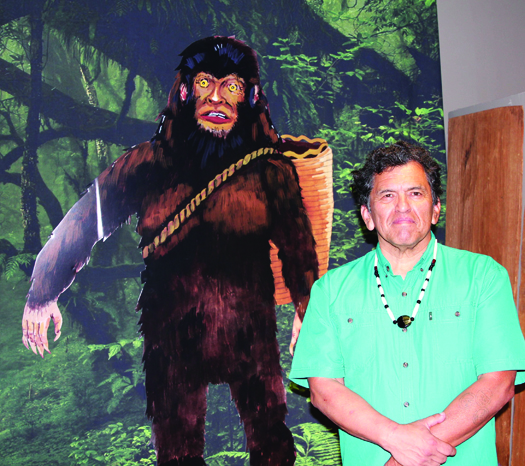
The Sasquatch exhibit settings come alive with spoken quotes from anthropological records. Continuing the traditions of their elder’s storytelling, these Native voices give insight to a perspective that has endured for generations.
Upper S’Klallam artist and storyteller Roger Fernandes’s artwork forms the foundation of the exhibit. He spent nearly four months going through the rigorous process of bringing Sasquatch, Dzoonokwa, Stick Indians, and Slapu to life via the paintbrush.
“In Native culture, there are many levels to the significance of beings like Slapu and Sasquatch,” explained Roger. “At one level it’s just describing what is – there are beings out there living in the forest and they don’t associate with us on a regular basis, they are secretive and hide. Another level, mythologically, there are powers in the forest we humans will never truly understand, and maybe these beings represent that power.
“Then there is another level that represents overcoming challenges and obstacles one comes across in life. When these stories are told to children, by rites a kid cannot beat these forest creatures, they are too big, too strong. But in the stories a child always figures out a way to confront and overcome them. Much like life, fear always makes challenges appear too big, but once solved you realize how much you learned and grew from facing the challenge head on.”
Sasquatch: Ancient Native Perspectives on the Mysterious Beings of the Woods will be on display at the White River Valley Museum, located just minutes from the Muckleshoot Reservation, through December 16. The exhibit is supported in part by the Tulalip Tribes Charity Fund.
“Being non-Native, I’m doing my best to do a sensitive portrayal here with a lot of Native friends,” added Patricia, Museum Director. “We had several Muckleshoot tribal members lend their voice to the exhibit, Upper S’Klallam artist Roger Fernandes created artwork for us, and we received a generous gift from the Tulalip Tribes Charity Fund that we are so thankful for. It is so meaningful to me to be trusted and supported by the local tribes.”
